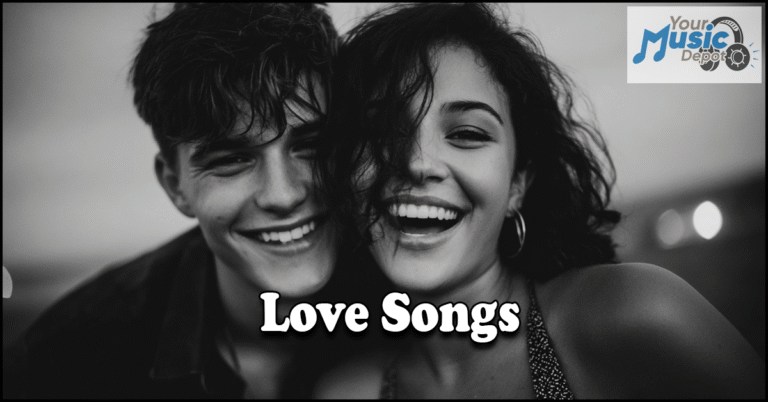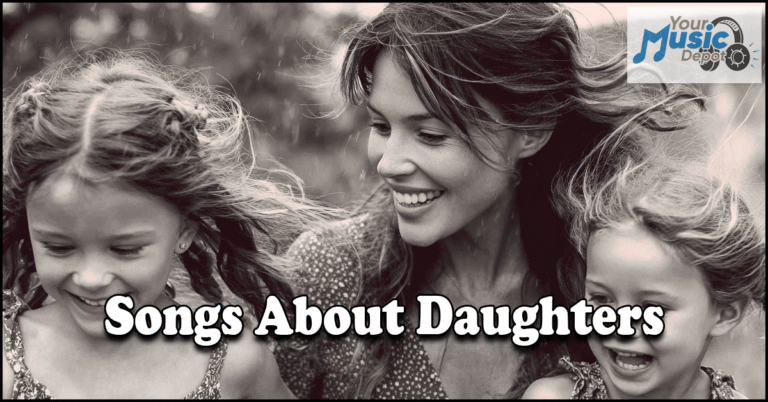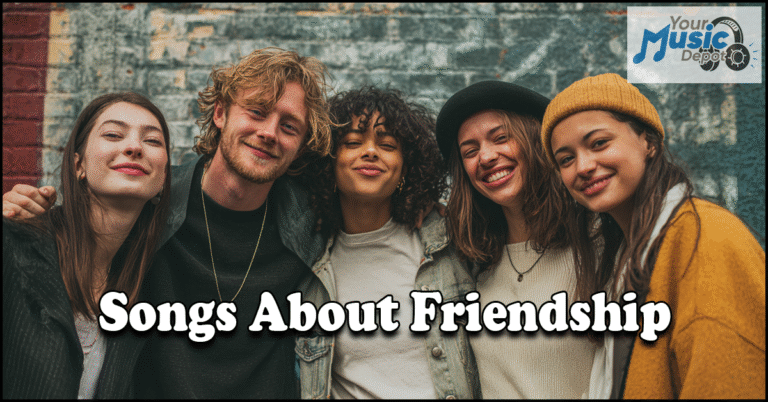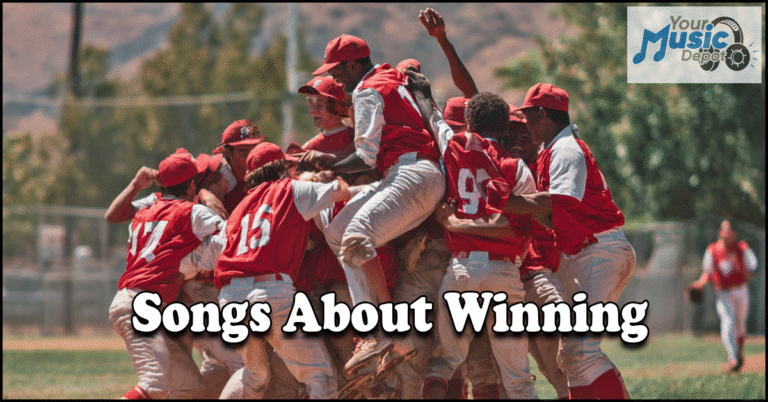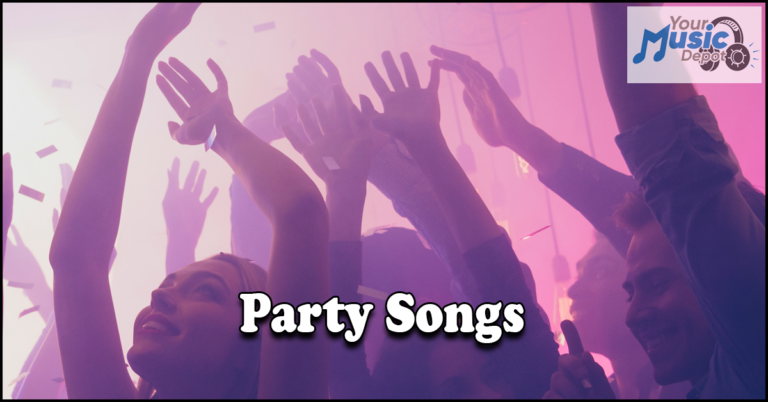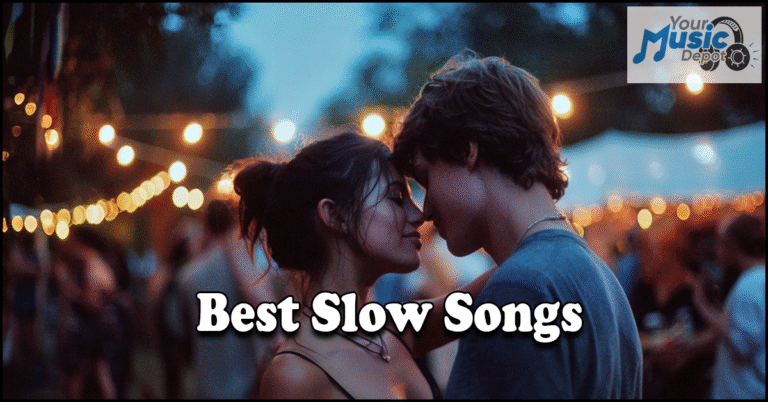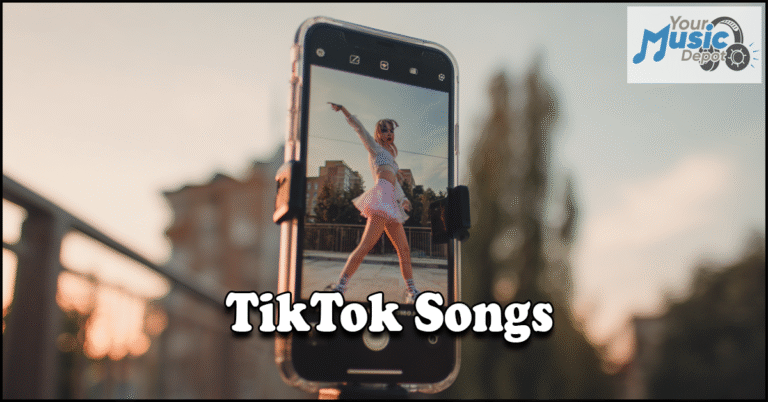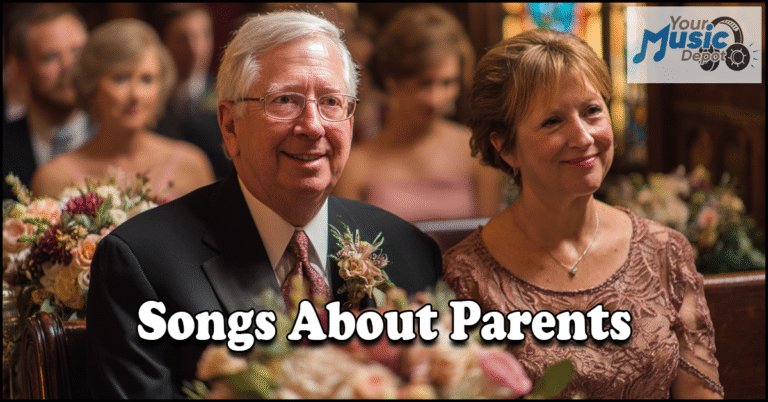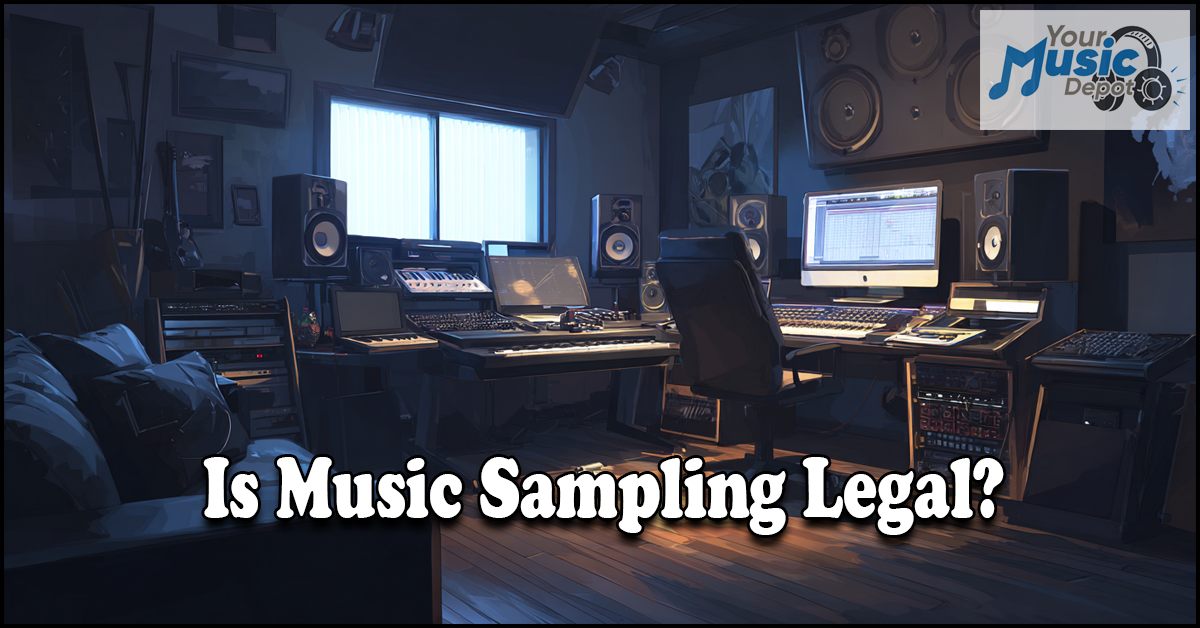
Is Music Sampling Legal? Welcome to our guide on the legality of music sampling.
If you’re an artist or producer who loves incorporating samples into your work, it’s essential to understand the legalities surrounding this practice.
Music sampling involves using pre-existing music in a new work, also known as a derivative work.
However, to avoid copyright infringement and legal consequences, you need to obtain permission from the copyright owners of both the song (composition) and the sound recording.
There are separate copyrights for the composition and the sound recording.
While licensing the right to use a sound recording is not compulsory, it is still necessary to avoid copyright infringement.
The length and nature of the sample determine the type of license required. Failing to get permission for samples can have serious legal implications.
Throughout this article, we will delve into the complexities of music sampling and help you navigate the legal landscape.
We will explore the requirements for covering a song, the rights involved in music sampling, common misconceptions, and more.
Our Main Points:
- Music sampling involves using pre-existing music in a new work.
- To sample music legally, you need permission from the copyright owners of the composition and the sound recording.
- License requirements vary based on the length and nature of the sample.
- Failing to clear samples can result in copyright infringement and legal consequences.
- Resources like Tracklib offer pre-cleared samples for artists to use in their tracks.
Music Copyright Basics
When it comes to music, understanding music copyright is essential.
There are two separate copyrights to consider: the copyright in the composition (lyrics and musical composition) and the copyright in the sound recording of that composition.
Let’s take a closer look at these copyrights and how they play a role in the music industry.
Copyright in Music Composition
The copyright in the music composition covers the lyrics and the musical arrangement.
This copyright is typically owned and controlled by music publishers.
It grants the copyright owner the exclusive right to reproduce, distribute, and publicly perform the composition.
To use a composition in a new work, such as a cover song or a remix, permission is required from the music publisher(s) who own the composition copyright.
Copyright in Sound Recording
The copyright in the sound recording covers the specific recording of the composition. This copyright is usually owned by record labels or the artists themselves.
It gives the copyright owner the exclusive rights to reproduce, distribute, and publicly perform that particular recording.
If you want to use a sound recording in a new work, such as sampling it or including it in a video, you need permission from the record label that owns the sound recording copyright.
Obtaining permission from both the music publisher(s) and the record label is crucial to avoid copyright infringement and legal consequences when using music in your own work.
Now, let’s take a closer look at how these copyright requirements translate into licensing needs.
Licensing Requirements for Cover Recordings
If you’re planning to create a cover version of a song, it’s essential to understand the licensing requirements involved.
To legally record your own audio-only version of a song, you need to obtain a mechanical license from the music publisher.
A mechanical license grants you the right to reproduce and distribute a copyrighted composition.
By obtaining this license, you can cover a song and release your own version, provided you pay the necessary fee to the music publisher.
However, it’s important to note that a mechanical license only covers audio usage and does not extend to video usage.
If you intend to use a pre-existing music recording in an audio-visual work, such as a television show or film, you need to secure synchronization licenses from both the music publisher(s) and the record label.
The synchronization license grants you the right to synchronize a song with visual elements, ensuring you have the necessary permission to use the recording in your project.
Obtaining the proper licenses ensures that you comply with copyright laws and respect the rights of the original music creators.
It also protects you from potential copyright infringement claims and legal consequences.
A cover song can be a fantastic way to showcase your own unique style and pay tribute to your favorite artists.
Understanding Music Sampling Rights
Sampling is a creative technique used in music production that involves incorporating a portion of a sound recording into a new song.
However, it’s important to understand the legalities surrounding music sampling to avoid copyright infringement and potential legal consequences.
When it comes to music sampling, you need to obtain permission from both the music publisher(s) and the record label.
The music publisher(s) hold the copyright to the composition, while the record label owns the copyright to the sound recording.
Licensing a sound recording is not compulsory, and the artist has the right to refuse to license their work or negotiate the licensing terms and fees.
The specific licensing requirements for music samples can vary based on the length and nature of the sample.
Some samples may fall under the fair use doctrine, but this defense can be subjective and may not always apply.
It’s always advised to seek proper permission and clearance to ensure compliance with copyright laws. Sampling without permission can result in copyright infringement and legal consequences.
Sample Clearance Process:
The process of clearing a sample involves obtaining the necessary licenses and permissions in a legally compliant manner.
Here’s an overview of the sample clearance process:
- Identify the source material: Determine the sound recording and composition you want to sample.
- Research copyright ownership: Identify the copyright owners of the sound recording and composition.
- Contact copyright owners: Reach out to the music publisher(s) and record label to seek permission and negotiate licensing terms.
- Obtain sample clearance: Once permission is granted, obtain the necessary licenses for the sample clearance.
- Ensure proper crediting: Give credit to the original artists, composers, and copyright owners to acknowledge their work.
| Pros of Clearing Samples | Cons of Not Clearing Samples |
|---|---|
|
|
Remember: Properly clearing music samples not only protects you legally but also respects the rights of the original creators. It ensures a fair and ethical use of existing music to create something new and innovative.
Next, we will explore the complications and defenses in sample licensing, including the de minimis defense and the concept of the heart of the song.
Complications and Defenses in Sample Licensing
When it comes to sample licensing, navigating the complexities of obtaining the necessary permissions can be quite challenging.
The requirements vary based on the length and nature of the sample, making the process intricate and multi-faceted.
In some cases, a sample that is unrecognizable may only necessitate a license for the sound recording itself.
However, if the sample is longer and more distinctive, both a license for the sound recording and permission for the composition may be required.
One important defense that artists may be able to rely on is the de minimis defense.
This defense allows for the use of a very brief sample that is not detectable by the ordinary listener without obtaining permission.
Essentially, if the sample is so minimal that it does not substantially take away from the original composition, it may be deemed defensible.
However, it is worth noting that this defense may not always be available, particularly if the sample includes the heart of the song or any distinctive elements that play a significant role in the composition.
It is vital for artists and producers to understand the intricacies of sample licensing and the potential defenses that exist.
While the de minimis defense can offer some protection for very short and unrecognizable samples, it is crucial to exercise caution and seek legal advice to ensure compliance and avoid copyright infringement.
Where to Find Cleared Music Samples
As an independent artist, finding cleared music samples can be a daunting task. However, there are resources available that can make the process easier and more accessible.
One such option is Tracklib, an online service that offers a vast library of pre-cleared samples for artists to use in their tracks.
With Tracklib, artists can find a wide range of high-quality samples that have already been cleared for use.
This eliminates the need for artists to go through the tedious process of negotiating with copyright owners and ensures that they can use the samples in their tracks without any legal complications.
Tracklib offers affordable clearance options, allowing independent artists to access a variety of samples without breaking the bank.
Whether you’re looking for drum loops, melodic samples, or vocal snippets, Tracklib has a vast selection to choose from.
Another option for finding cleared music samples is to create your own. By re-recording the desired musical element yourself, you bypass the need for clearance from the original copyright owners.
This approach allows you to have complete control over the samples you use in your tracks and ensures that you are not infringing on anyone’s copyright.
Whether you choose to use a service like Tracklib or create your own samples, it’s important to prioritize finding cleared music samples to avoid any legal issues.
By utilizing these resources, you can enhance your music with high-quality samples and stay on the right side of the law.
Common Misconceptions About Sampling
When it comes to music sampling, there are several misconceptions that artists and creators often believe.
It’s important to address these misconceptions to clarify the legalities and ensure compliance with copyright laws.
- Sampling Myth: Samples shorter than a certain duration are legal without permission.
This is a common misunderstanding among artists. Some believe that using a sample that is shorter than a specific duration, such as six seconds, is exempt from copyright laws.
However, this is not accurate. Regardless of the length of the sample, permission and clearance from the copyright owners are required.
Sampling without permission is considered copyright infringement and can have legal consequences.
- Sampling Myth: Clearing samples is not necessary for distribution.
Another misconception is that releasing a song with uncleared samples won’t result in any issues with distribution.
However, this is far from the truth. Major streaming platforms have strict policies regarding copyright infringement.
If a song contains uncleared samples, it can be flagged, leading to distribution issues or even removal from the platforms.
As a result, it’s crucial to obtain proper clearance for all samples used in a song.
- Sampling Myth: Some samples fall under fair use.
While fair use is a valid defense in certain cases, it does not automatically apply to all sampling scenarios.
Determining fair use involves a case-by-case analysis that considers various factors, such as the purpose and nature of the use, the amount of the sample used, and the effect on the original work’s market.
It’s essential to consult with legal professionals to assess fair use defenses accurately.
It’s crucial for artists and creators to be aware of these misconceptions and approach sampling with a clear understanding of the legal requirements.
Clearing samples and obtaining proper permission from copyright owners is the best way to ensure compliance and respect for the rights of original music creators.
“Sampling without permission is copyright infringement and can result in legal consequences.”
| Common Myths | Reality |
|---|---|
| Samples shorter than a certain duration are legal without permission | All samples, regardless of length, require permission and clearance from copyright owners. |
| Clearing samples is unnecessary for distribution | Uncleared samples can lead to distribution issues and removal from platforms. |
| Some samples fall under fair use | Fair use does not automatically apply to all sampling scenarios. |
Conclusion
In conclusion, music sampling is a complex legal area that artists need to navigate carefully.
To avoid copyright infringement and legal consequences, it is essential to obtain permission and licenses from the copyright owners of both the composition and the sound recording.
Failing to clear samples can have serious implications for artists and their work.
Fortunately, there are resources available to assist artists in the sampling process.
Platforms like Tracklib provide pre-cleared samples that artists can incorporate into their tracks without the need for extensive negotiations.
These services offer a convenient and legal way for artists to access a wide range of high-quality samples.
However, it is crucial for artists to understand and respect copyright laws when sampling music.
By doing so, artists can support the rights of original music creators while avoiding legal issues.
With proper permission and licensing, artists can continue to explore the creative possibilities of music sampling while staying within the boundaries of the law.
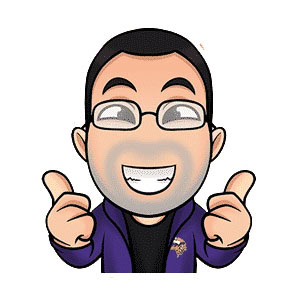
Ryan Conlon is the owner and author of Your Music Depot, a go-to platform for music enthusiasts seeking curated song lists and artist insights.
Passionate about the intersection of music and storytelling, Ryan’s goal is to help people find the perfect song for every occasion, exploring how songs can capture emotions and memories.
Subscribe to Our Newsletter

